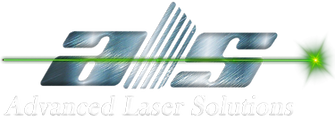
Infrastructure
The Infrastructure Industry in Australia is a vital sector that requires innovative solutions to meet the unique needs of building and maintaining the country's infrastructure. Industrial laser technology has emerged as a key enabler in the sector, offering a range of applications that cater to the specific requirements of infrastructure development. From cleaning and surface preparation to welding, cutting, and marking, lasers have become an essential tool for many infrastructure operators.
Laser Cleaning
Industrial laser cleaning is a non-abrasive and non-toxic process that uses high-powered lasers to remove contaminants, such as grime and pollutants, from surfaces. This technology is ideal for surface preparation, restoring, and refurbishing infrastructure equipment and components. Some of the benefits of laser cleaning in the Infrastructure Industry include:
• Improved surface preparation: Laser cleaning ensures a clean surface for coating, painting, or bonding, resulting in a stronger and more durable finish.
• Increased efficiency: The process is fast and precise, reducing production time and increasing productivity.
• Reduced maintenance: Laser cleaning eliminates the need for harsh chemicals and abrasive methods, reducing maintenance and extending the lifespan of infrastructure equipment and components.
Laser Welding
Industrial laser welding is a precise and efficient process that uses a high-powered laser beam to join materials. This technology is commonly used in the Infrastructure Industry for applications such as:
• Bridge construction: Laser welding is ideal for welding bridge components, such as beams and girders.
• Road construction: Laser welding is used in the production of road construction equipment, such as asphalt pavers and graders.
• Component welding: Laser welding is used to weld infrastructure components, such as pipes and fittings.
Laser Cutting
Industrial laser cutting is a versatile and accurate process that uses a high-powered laser beam to cut various materials, including metals, plastics, and composites. This technology is widely used in the Infrastructure Industry for applications such as:
• Custom infrastructure components: Laser cutting is ideal for cutting custom infrastructure components, such as bridge components and road signs.
• Construction equipment: Laser cutting is used in the production of construction equipment, such as cranes and excavators.
• Production of custom components: Laser cutting is used to cut custom components for infrastructure applications.
Laser Marking
Industrial laser marking is a non-contact process that uses a high-powered laser beam to mark or engrave various materials. This technology is commonly used in the Infrastructure Industry for applications such as:
• Identification marking: Laser marking is used to mark and identify infrastructure equipment and components, such as serial numbers and logos.
• Labeling: Laser marking is used to label infrastructure components, such as pipes and fittings.
• Aesthetics: Laser marking is used to create decorative designs and patterns on infrastructure surfaces.
By incorporating industrial laser technology into their processes, Infrastructure operators in Australia can improve the quality and efficiency of their operations, while reducing maintenance and extending the lifespan of infrastructure equipment and components. Whether it's cleaning, welding, cutting, or marking, lasers offer a range of innovative solutions for various infrastructure applications.
